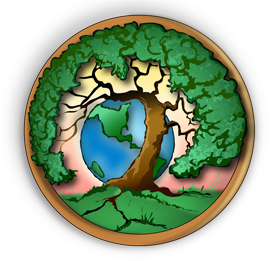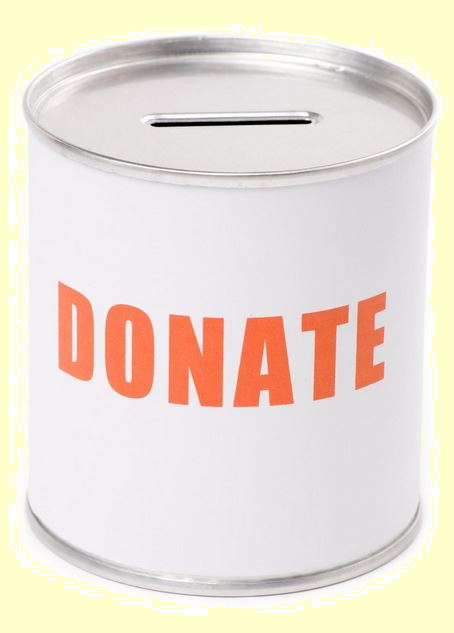Let me introduce you to John D. Liu

I recently sent a letter to someone I admire and respect as a leader in the global earth repair/ecological restoration movement and felt the need to introduce others to John D. Liu as well. MP
Hello John D. Liu
I am a fan of yours. A mutual friend gave me your email address.
I am about to launch an Earth Repair Institute with the aim to be an international hub website for ecological restoration information.
Also I would like to start a Research, Training and Innovation Center for Ecological Restoration. Please send me information pertinent to this.
You are a very busy man but I hope that we can find time to assist each other’s efforts in the years ahead.
The most important writing I’d like you to look at is my global carbon sequestration article. It outlines the world effort needed with numbers of workers and budgets. Here is a link.
Towards a greener, happier world
Michael Pilarski, Friends of the Trees Society
PS. I have written a number of publications and would be happy to send you copies via postal mail if you sent an address.
Restoration Forestry: An International Guide to Sustainable Forestry Practices. 592 pages, 2004. Kivaki Press.
Third World Resource Guide, 1993, Friends of the Trees Society.
Resources for people working on sustainability in the global South. I wish I had titled it the Two-Thirds World
International Green Front Report, 1988. Friends of the Trees Society. An overview of the earth repair movement at the time.
PPS. I just wrote an introduction to you for my readers which will go on my blog.
Let me introduce you to John D. Liu
John D. Liu is one of the world’s most far-thinking and eloquent spokesperson for global earth repair. John D. Liu is an American filmmaker who has lived in China for 30 years. He travels widely and works with universities and governments in the Netherlands and other countries.
Everyone should watch his video documentary Green Gold. Liu combines permaculture and ecological restoration in this international documentary showing that large-scale restoration is possible. Filmed in China, Ethiopia, Jordan and elsewhere, it has been watched by millions of people. The Rwanda government is taking his advice which has initiated positive changes for millions of smallholder farmers. At the Lima Climate talks in December 2014, Liu hosted the “Growing Collective Consciousness from the Voices for the Climate” with Tiahoge Ruge of Mexico. This was the alternative, civil-society voice of the grass-roots climate change movement as compared to the official government negotiating.
Below are links to John D. Liu’s Facebook page and some recent writings. Anyone interested in earth repair/ecological restoration would do well to listen to Liu’s train of thought.
I give this glowing recommendation as someone who has been researching and championing earth repair since the 1970s. John D. Liu reminds me of Richard St. Barbe Baker, who was the world’s most indefatiguable spokesperson for global reforestation from the 1920s until he died in 1982. St. Barbe Baker was known as the “Man of the Trees” and he founded an international organization called Men of the Trees. St. Barbe Baker inspired me to start Friends of the Trees Society in 1978. John D. Liu may not start any international organization but he is an ipso facto spokesperson for the earth repair movement of today. The movement is large and growing as the threats to our dearly beloved planet’s ecosystems are becoming ever clearer and more dire. I intend to write lots more on earth repair topics throughout 2015, so I hope you will stay tuned to my writings as well as to Liu’s.
“In Rwanda, the initial impetus for the assessment came from the ambitious commitment, announced by the Government of Rwanda in 2011, to implement forest landscape restoration countrywide by 2035. The main aim of the assessment was therefore to guide the scaling up of Rwanda’s restoration efforts.”
“This trip to Rwanda has reinforced the need and the readiness for Research, Training and Innovation Centers for Ecological Restoration. These centers can function to bring large numbers of people to immediately engage in mitigation and adaptation to climate change.
There is a tendency for knowledgeable consultants, academics and policy makers to talk to each other about how serious climate change is and what to do about it. Gradually it is becoming clear that the real heroes in combating climate change are the small holder farmers and landless people who make their living on common lands. Either they will be engaged in large-scale restoration of Earth's natural ecosystems or civilization as we know it will fail.” John D. Liu
If you want to find papers, films, interviews, presentations and audio recordings about John D. Liu's thoughts on ecological restoration, economy and various other subjects you can find a plethora of collected materials at the following link:
https://hydrology-amsterdam.academia.edu/JohnLiu
video stories about ecosystem restoration
I hope everyone will watch the What if we change? film and pass it on!
https://www.whatifwechange.org/magazine/index.php
Mediterranean climate permaculture guild (Facebook Page)
Research, Training and Innovation Centers for Ecological Restoration
Facebook page
Set up by John D. Liu. I see a lot of permaculturists posting here.
https://www.facebook.com/Innovationcenters
Here are some excerpts from an article by John D. Liu after his participation at the Lima Climate talks in December 2014.
Growing Collective Consciousness from the Voices for the Climate
John D. Liu,
“Needless to say a managed transition of global human society and economy to a more fair and flourishing one is vastly preferable to continuing on a suicide course. Fortunately, the people who joined in the conversations called “Growing Collective Consciousness from the Voices for the Climate” that I co-hosted with Tiahoge Ruge of Mexico, showed that many people from all walks of life and diverse cultures are able and willing to embrace transformational change.
Many people now realize that there is simply no way to avoid massively transforming our lifestyles. We need to process that this requires us to step into the unknown. In going “where no man has gone before”, we need to use all of our intelligence, all of our imagination, all of our compassion and all of the wisdom that has accrued to humanity throughout our history.
We could naturalize the economy.
By telling the truth about the value of nature we would have to recognize some challenging facts about our current monetary system and our current definition of wealth. We would need to understand that we have inverted the economy by valuing as the basis of our currencies and economies, derivatives that are extracted and fashioned from functional ecological systems. We need to understand that the Earth’s Natural Systems are vastly more valuable than the derivatives. We need to acknowledge that the only way the existing system can work is to simply disappear all the negative outcomes by calling climate change, biodiversity loss, poverty, disparity, pollution, and war, externalities. If we had not removed these from the balance sheet the economy would have been below zero from day one. We need to admit that the current economic model simply cannot work because at its heart is a fundamental mistake.
Remarkably, by correcting this mistake and valuing natural systems higher than products and services derived from them, we have the answer. With a monetary system based on ecological function, growth would not include waste and pollution but would make the ecology and the economy consistently more resilient. In this way we can have both growth and ecological functionality. Instead of creating a perverse incentive to degrade the ecosystems we can reward those who conserve, protect and restore ecological systems. This is a profound change. By valuing life higher than material things we are coming much closer to the spiritual teachings of all of the world’s great religions. This understanding is the next level of evolution for human consciousness. But it is not simply a profound philosophical understanding, it is a practical way forward to rebalance the climate, to create meaningful employment, to fairly distribute affluence and create an abundant and sustainable human civilization.
Functional Ecosystems as the Engine of the Green Economy.
Article by John D. Liu. One of the cutting edge thinkers in envisioning a green economy.
https://www.academia.edu/9202164/Functional_Ecosystems_as_the_Engine_of_the_Green_Economy
“We know that the Earth’s naturally functioning ecosystems are the basis of life on Earth, providing air, water, soil fertility, raw materials and energy. It is also clear that the global economy does not recognize that the production and consumption of all goods and services depends entirely on the ongoing functionality of these ecosystems, and, as a result, fails to value it correctly. This is not surprising for a system that was founded on feudal privilege, military force, colonization and slavery.”




















 (Version # 1, February 16, 2015)
(Version # 1, February 16, 2015)
